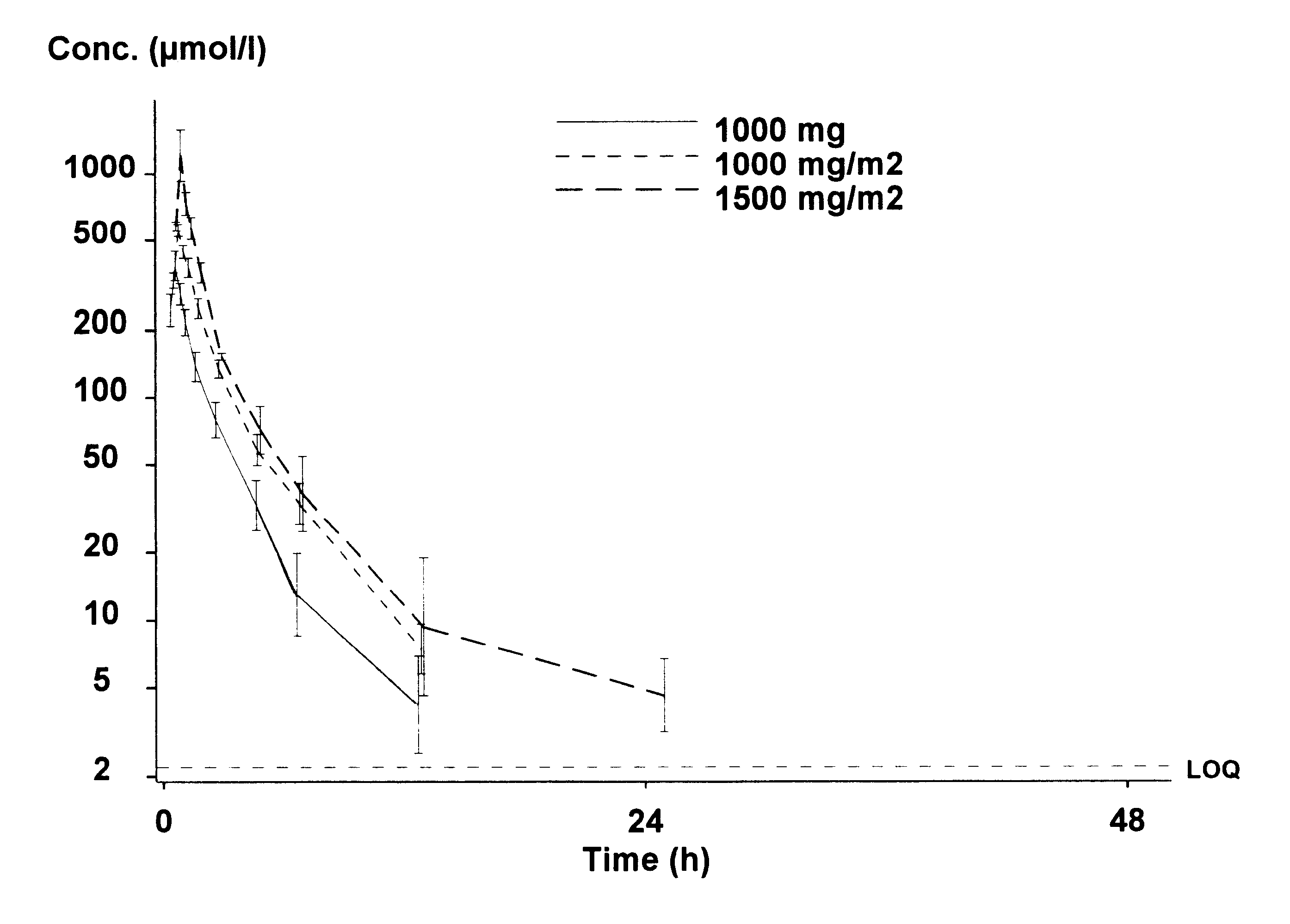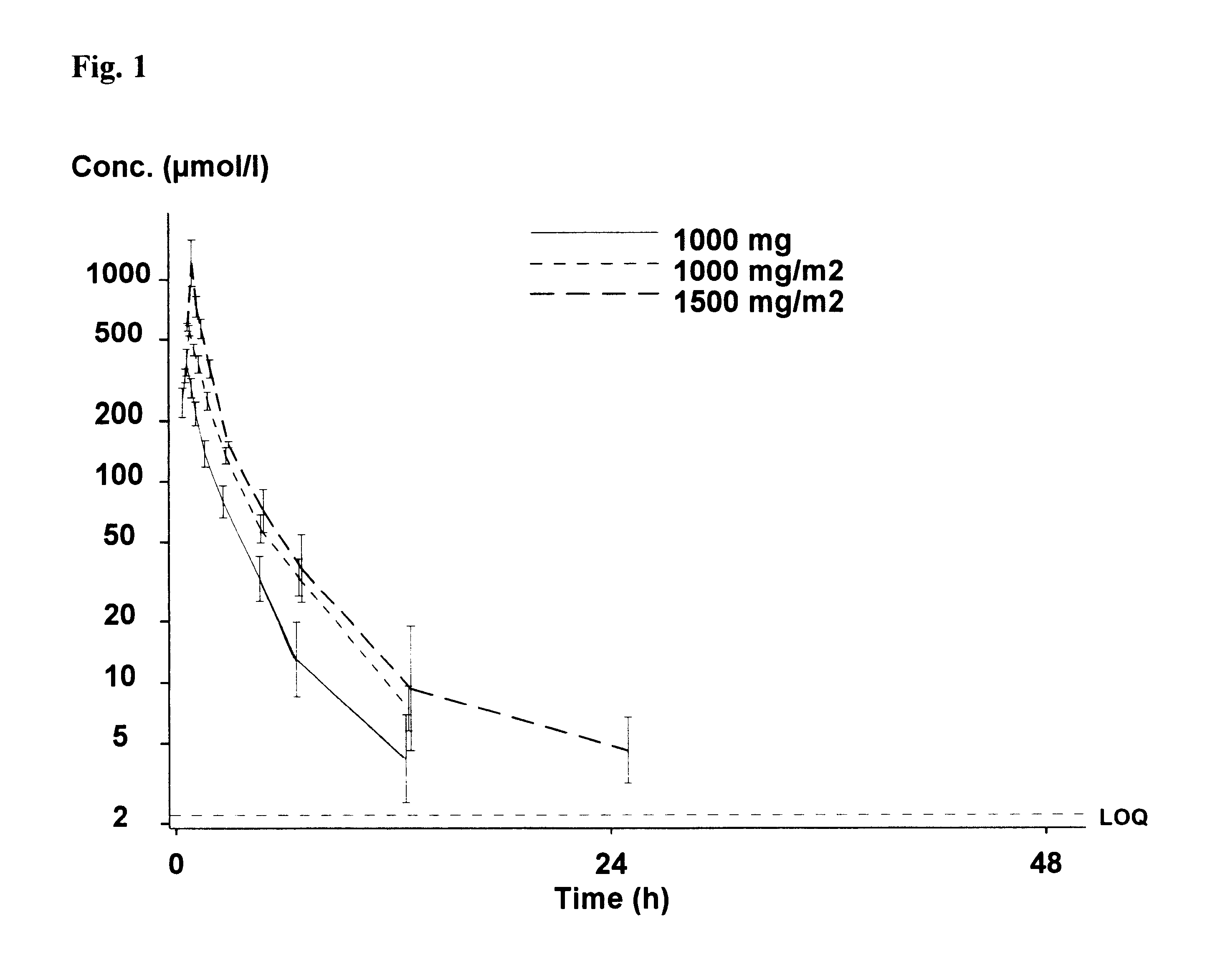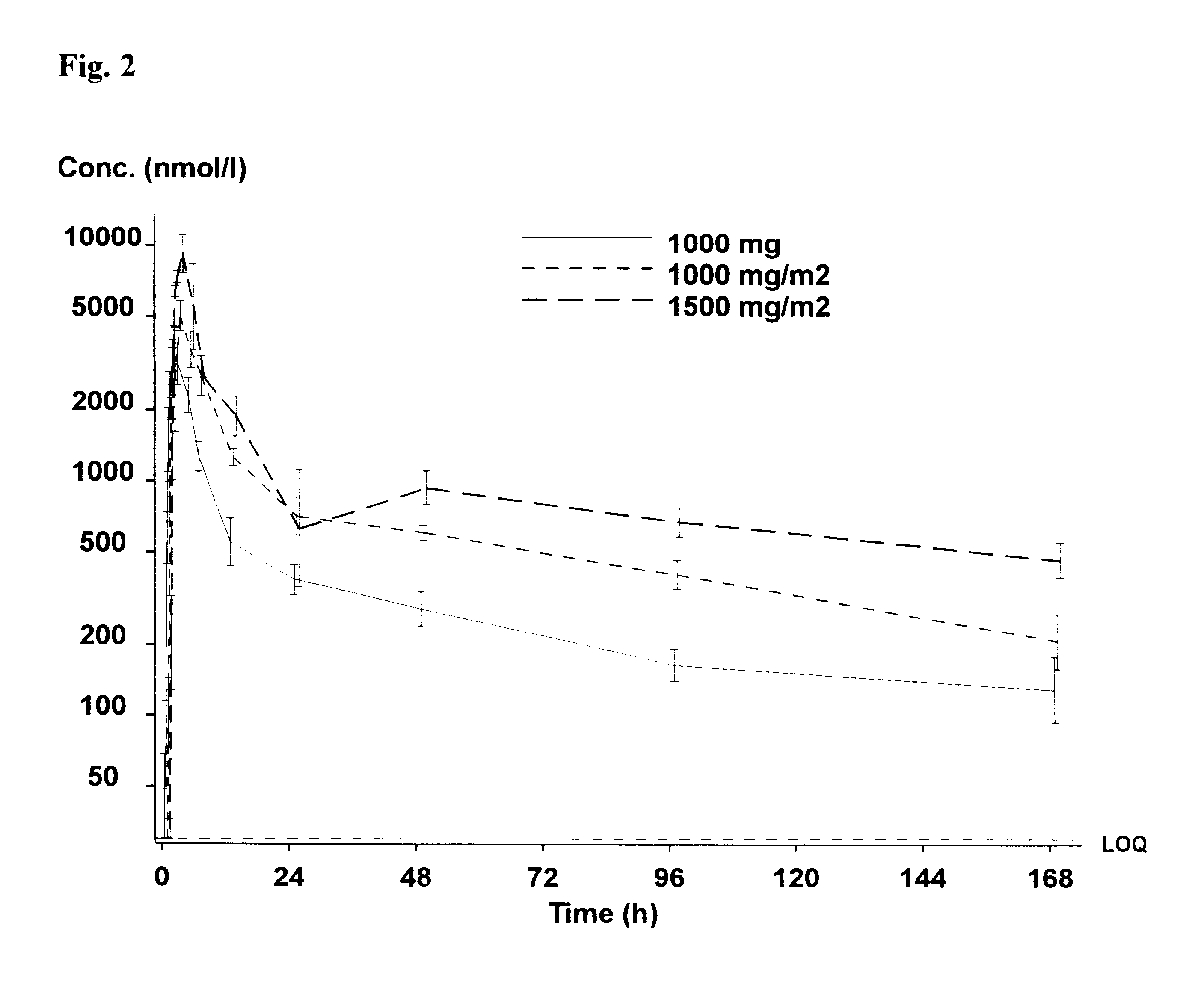Methods to potentiate intravenous estramustine phosphate
a technology of estramustine phosphate and estramustine phosphate, which is applied in the direction of medical preparations, pharmaceutical delivery mechanisms, organic active ingredients, etc., can solve the problems of thrombophlebitis and local irritation at the peripheral intravenous injection site, drug discontinuation, and general prohibitive intravenous administration of estramustine phosphate at higher dosages
- Summary
- Abstract
- Description
- Claims
- Application Information
AI Technical Summary
Benefits of technology
Problems solved by technology
Method used
Image
Examples
example 1
Two patients with advanced metastatic prostate cancer were treated with estramustine phosphate intravenously given through a central line. The patients received an estramustine phosphate dosage of 2500 mg / m2. Estramustine phosphate was administered as a single infusion on a weekly schedule in a repetitive fashion. Each infusional dose was administered over a 90 minute infusion. The infusions were well tolerated without serious toxicity and both patients demonstrated a response (reduction) in their prostate specific antigen (PSA).
example 2
Three patients with advanced metastatic prostate cancer were treated with estramustine phosphate administered intravenously through a central line at a dosage of 1000 mg / m2. Estramustine phosphate was administered as a single infusion on a weekly schedule in a repetitive fashion. Each infusional dose was administered over a 30 minute infusion. The infusions were well tolerated with several patients demonstrating PSA response.
example 3
Three patients with advanced metastatic prostate cancer were treated with estramustine phosphate administered intravenously through a central line at a dosage of 1500 mg / m2. Estramustine phosphate was administered as a single infusion on a weekly schedule in a repetitive fashion. The infusional dose was administered either over 30 minutes or over 1 hour. The infusions were well tolerated with one patient demonstrating a response in bulky tumor adenopathy.
PUM
 Login to View More
Login to View More Abstract
Description
Claims
Application Information
 Login to View More
Login to View More - R&D
- Intellectual Property
- Life Sciences
- Materials
- Tech Scout
- Unparalleled Data Quality
- Higher Quality Content
- 60% Fewer Hallucinations
Browse by: Latest US Patents, China's latest patents, Technical Efficacy Thesaurus, Application Domain, Technology Topic, Popular Technical Reports.
© 2025 PatSnap. All rights reserved.Legal|Privacy policy|Modern Slavery Act Transparency Statement|Sitemap|About US| Contact US: help@patsnap.com



